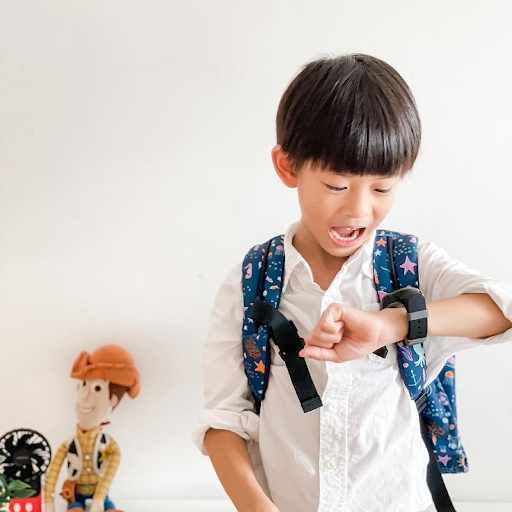Balancing Screen Time and Wellbeing for Children: What Educators and Parents Need to Know in 2025

Children worldwide spend more hours than ever with digital devices, raising urgent questions for parents and educators about how to balance the benefits of technology with the risks to well-being.
The challenge is clear: how can parents and teachers ensure that children reap the rewards of digital learning and creativity while protecting them from the pitfalls of excessive screen time and online exposure?
For kids technology companies like myFirst, the answer lies in a combination of mindful technology design, evidence-based guidelines, and a renewed focus on real-world experiences.
The Digital Reality of Childhood in 2025
Technology is no longer a luxury or an add-on in children's lives but a daily reality. Recent data from Common Sense Media shows that "9% of children age 8 or younger have their own cellphone, "and children aged eight and younger spend about two and a half hours a day with screen media."
The COVID-19 pandemic accelerated this trend, making digital platforms essential for learning, socializing, and entertainment. While these tools have opened new doors for education and creativity, they have also introduced many challenges.
Educators and psychologists warn that unregulated screen time can lead to a range of issues, from sleep disturbances and reduced attention spans to increased anxiety and social isolation.
G-Jay Yong, founder of Singapore-based kids' technology company myFirst, explains, "Parents are looking for solutions beyond simply limiting screen time. They want technology that supports their child's growth, encourages real-world play, and keeps them safe."
This demand has driven myFirst to develop products that intentionally limit internet access, promote creative activities, and provide robust parental controls.
Redesigning Technology to Support Child Development
Purpose-Built Solutions vs. One-Size-Fits-All Approach
The children's technology industry is experiencing a fundamental shift from adapting adult devices for younger users to creating specialized solutions designed specifically for children's developmental needs.
Traditional approaches often involved taking existing technology and adding basic safety features or simplified interfaces. The new paradigm consists of building products from the ground up with children's cognitive, physical, and emotional development as primary considerations.
This approach centers on the principle that technology should accommodate children's natural learning patterns rather than forcing children to adapt to adult-oriented interfaces.
Active Creation vs. Passive Consumption
Modern children's technology increasingly emphasizes creative engagement over passive entertainment. This involves designing tools that encourage children to create original content rather than just consume media, while developing problem-solving skills through hands-on activities.
These approaches help children express themselves through various digital media devices, like kids' cameras or sketchbooks, and learn through experimentation and exploration. They ultimately build confidence through creative achievement and personal accomplishment.
Parental Controls and Digital Oversight
Contemporary parental control systems go beyond straightforward content blocking to offer nuanced oversight tools. These systems allow customizable boundaries based on individual family values while providing transparency about children's digital activities.
They enable gradual independence as children demonstrate responsibility, balancing protection with age-appropriate autonomy. Most importantly, they communicate with parents and children about digital citizenship and responsible technology use.
Beyond Limits: Fostering Balance and Real-World Connection
Physical Activity Integration
Contemporary children's devices increasingly incorporate features that encourage movement and real-world engagement. Activity tracking systems gamify physical exercise while location-based features encourage outdoor exploration.
For instance, myFirst Fone R2 allows parents to monitor their child's heart rate and fitness statistics, including steps taken, calories burned, and distance covered. If regular heart rate levels change, the watch will notify kids to check their phase and make adjustments as needed.
Family-Centered Technology Use
The trend toward collaborative technology experiences emphasizes shared digital activities that unite families through parent-child co-creation projects. This approach promotes open dialogue about digital experiences and challenges while helping families establish technology norms and values. Parents model healthy digital habits for children, creating a collaborative rather than restrictive approach to technology management.
What Lies Ahead for Kids' Technology
Traditional approaches to managing children's technology use have focused primarily on restriction – screen time limits, content filters, and parental controls. While these tools remain important, forward-thinking companies have begun reimagining children's technology from the ground up, designing devices and platforms specifically tailored to developmental needs rather than simply creating watered-down versions of adult technology.
With over one million families across 36 countries now using myFirst's suite of kid-focused devices–from the myFirst Camera 50 and myFirst Fone R2 to its myFirst CareBuds and many others–G-Jay Yong and his team have placed themselves at the forefront of a movement to reshape digital childhood. Their approach offers a window into the future of healthy tech habits—one that blends safety, creativity, and connection.
"We start by asking what children need at each developmental stage, then build technology that supports those needs while protecting them from potential harms," Yong explains. "This means designing products that naturally guide children toward positive usage patterns rather than simply restricting what they can access."
The challenge isn't about eliminating screens from children's lives. That's neither realistic nor beneficial. The real question is how we transform screen time from passive consumption to active engagement, supporting development while establishing healthy digital habits early on.
© Copyright IBTimes 2025. All rights reserved.





















